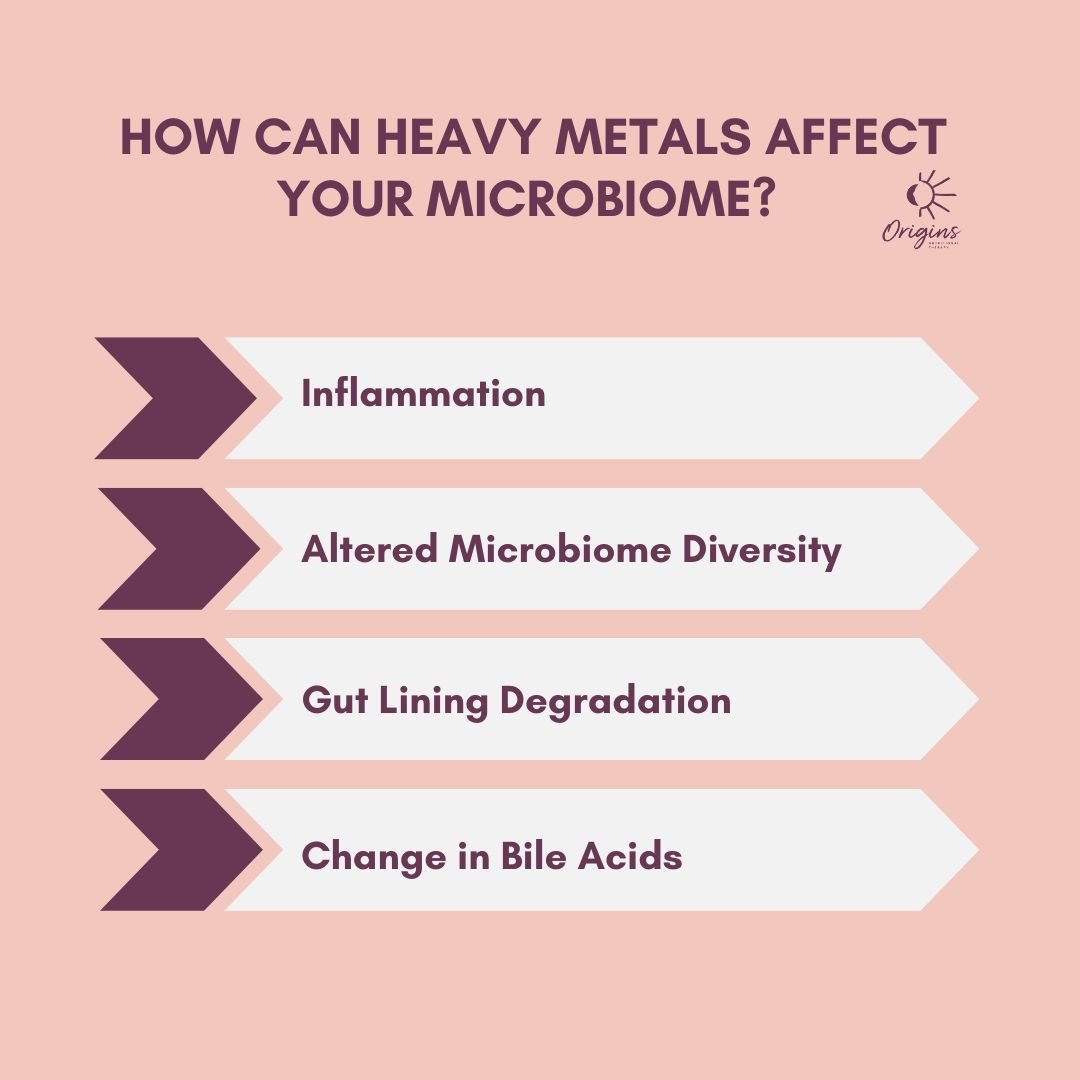Navigating the Impact of Heavy Metal Toxicity on Gut Health
In the symphony of our bodily functions, the gut plays a lead role, orchestrating digestion, absorption, and the overall well-being of our system. Heavy metal toxicity can have serious consequences on this crucial aspect of our health.
Inflammation Alert!
Exposure to heavy metals such as lead, mercury, and cadmium can set off a chain reaction within our gut, triggering inflammation. This inflammatory response disrupts the delicate balance of our digestive system, potentially leading to a cascade of health issues. It's not just a matter of discomfort; it's a threat to the harmony our body strives to maintain.
Microbiome Dynamics: Changes in Diversity
Imagine your gut microbiome as a diverse team, each member playing a unique role in the digestive process. Heavy metal toxicity, however, acts as a disruptive force, upsetting the balance and diversity of this team. This disturbance in the microbial orchestra can have profound implications on digestion and overall gut function. A less diverse microbiome may compromise nutrient absorption and leave our system vulnerable.
Gut Lining Breakdown – Compromising Integrity
The journey from our gut to the rest of our body is safeguarded by the gut lining. Heavy metal exposure doesn't just stop at causing inflammation; it can contribute to the breakdown of this crucial barrier. The repercussions? Harmful substances slipping through the cracks, potentially wreaking havoc on our internal systems. Maintaining the integrity of our gut lining is fundamental to our overall health.
Bile Acids: A Shift in Digestive Chemistry
Picture bile acids as the unsung heroes working behind the scenes to facilitate digestion. Heavy metal toxicity, unfortunately, can disrupt this chemistry. Alterations in the composition of bile acids can impact the digestive process and nutrient absorption. It's akin to a sudden change in the rhythm of our digestive symphony, requiring attention and intervention.
The Unveiling: Testing for Long-Term Heavy Metal Accumulation
Understanding the long-term impact of heavy metal toxicity is crucial, and a Hair Tissue Mineral Analysis (HTMA) serves as a powerful tool. This non-invasive and cost-effective test offers insights into heavy metal accumulation over time. Unlike many functional medicine tests, HTMA provides a comprehensive view without invasive procedures or exorbitant costs.
How HTMA Works:
Non-invasive Testing: HTMA involves analyzing a small sample of hair, making it a painless and non-invasive method to assess heavy metal levels.
Cost-Effective: Compared to other functional medicine tests, HTMA is relatively inexpensive, ensuring accessibility for individuals seeking a comprehensive assessment of heavy metal toxicity.
The Cascade Effect: Heavy Metal Toxicity and Mineral Absorption
Heavy metal toxicity not only impacts gut health but also interferes with the body's ability to absorb essential minerals. This disruption creates a cascade effect, further exacerbating gut health issues. HTMA not only identifies heavy metal levels but also assesses mineral levels in the body, providing a holistic view of potential imbalances.
The Path to Healing: Navigating Heavy Metal Detoxification
Understanding the intricate web of heavy metal toxicity is just the beginning; the journey to recovery involves strategic and informed steps. It's crucial to emphasize the importance of working with a healthcare practitioner, especially when considering chelation therapy. Attempting to chelate heavy metals without addressing and improving gut health can lead to unintended consequences, including the reabsorption of heavy metals and exacerbation of symptoms.
Chelation and Gut Health: A Symbiotic Relationship
Chelation therapy involves the use of compounds that bind to heavy metals, facilitating their elimination from the body. While this process can be immensely beneficial, it necessitates a delicate balance, particularly when it comes to gut health. The gut, being a central player in our overall well-being, requires careful attention during chelation to prevent unintended complications.
The Role of a Practitioner:
Tailored Approach: A healthcare practitioner specializing in heavy metal detoxification can tailor a chelation protocol to your specific needs, considering the severity of heavy metal accumulation, overall health, and any underlying gut issues.
Monitoring and Adjustments: Regular monitoring is essential during chelation therapy. A practitioner can assess your progress, making necessary adjustments to ensure effective detoxification without causing harm.
Addressing Gut Health: A holistic approach involves not only eliminating heavy metals but also addressing the root cause. A practitioner can guide you in optimizing gut health, ensuring a supportive environment for the detoxification process.
The Pitfalls of DIY Chelation:
Attempting chelation without professional guidance poses risks, especially when gut health is overlooked. Without addressing gut issues, there's a risk of reabsorbing heavy metals, contributing to a cycle of toxicity and potentially worsening symptoms. It's a delicate dance that requires expertise to navigate safely.
The Synergy of Gut Health and Chelation:
By synergizing gut health improvements with chelation therapy, individuals can enhance the efficacy of detoxification while minimizing potential risks. This collaborative approach, guided by a knowledgeable practitioner, ensures a comprehensive and safe journey toward healing.
Ready to Take the Next Step?
If you're ready to explore more options or kickstart your journey to better health, consider booking a Discovery Call to discover the possibilities and find the best path forward for your unique health journey. Alternatively, if you're eager to get started, schedule an HTMA analysis to gain valuable insights into your heavy metal levels and mineral balance. Your health transformation begins with the first step – let's embark on this journey together!


